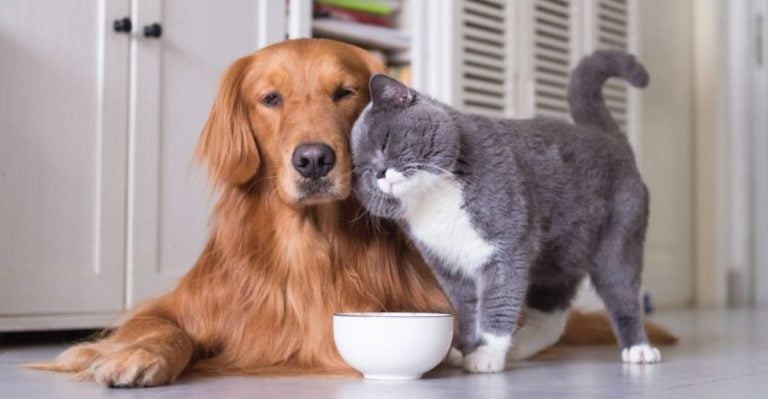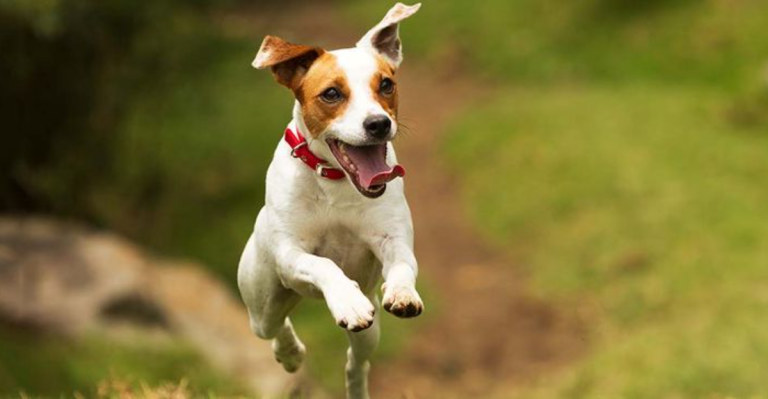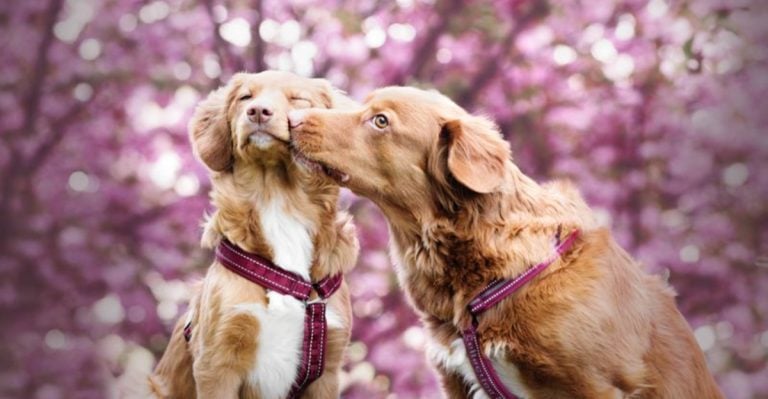7 Worst & 7 Best Pets to Have If You Already Own a Dog
You already have a dog (or maybe two), and life is pretty great. There’s always a tail wagging when you walk in the door, someone to keep your feet warm at night, and a built-in excuse to never skip your morning walk.
But now you’re thinking about adding a new member to the pack — another pet to liven things up or maybe just to make your home feel a little more complete. Sounds like a good idea, right?
Well… not always.
Dogs are social creatures, but not every pet plays well with them. Some animals will treat your pup like a best friend from day one. Others? They’ll run, hide, or spark chaos the moment your dog so much as blinks.
And if you’ve ever witnessed your Labrador attempt to “herd” a confused guinea pig or bark endlessly at a fish tank, you know things can go downhill fast.
Before you welcome a new companion into your home, it’s crucial to understand which animals are compatible with dogs — and which ones could turn your peaceful pet life into a circus act.
That’s where this list comes in. We’ve rounded up the 7 best and 7 worst pets to pair with your canine roommate.
Whether your dog is chill as a cucumber or a bit of a drama queen, this guide will help you make a decision that keeps everyone safe, happy, and (mostly) sane.
1. Hamsters
Hamsters are tiny, fast, and fragile — three traits that don’t mix well with curious canines. Even the calmest dog may be tempted to paw at their cage or bark when the little rodent scurries across its wheel.
They also stress easily, and living under the constant gaze of a predator (even a friendly one) can affect their well-being. It’s best to skip this pairing unless your dog is completely uninterested.
2. Reptiles (Snakes, Lizards)
Reptiles are quiet, delicate creatures that prefer a stable, calm environment — not something most dogs naturally provide. Curious noses, wagging tails, and sudden barking can stress reptiles out or even cause injury.
Dogs may also knock over heat lamps or cages, making reptiles vulnerable. While it’s possible to make it work, the level of separation and supervision required makes them a tricky match.
3. Chickens
Dogs and chickens don’t always mix well, especially if your pup has a strong prey or herding instinct. Chickens are easily startled and vulnerable, making them likely targets for chasing or worse.
Even if your dog doesn’t mean harm, its energy and curiosity can disrupt the peace of your backyard coop. Fences and separation help, but harmony isn’t guaranteed.
4. Pet Rodents (Rats, Mice, Gerbils)
Rodents like mice and rats are high-alert creatures that rely on quiet and routine. The presence of a barking, bouncing dog nearby can be enough to send them into constant stress mode.
Some dogs will see them as squeaky toys — and the consequences can be heartbreaking. It’s not impossible to keep both, but it takes intense training and spatial separation.
5. Fish
Fish seem like a safe choice — they live in water and mind their own business. But for many dogs, the motion inside an aquarium is endlessly fascinating. This can lead to barking, pawing at the glass, or worse, knocking the tank over.
Beyond stress and noise, spilled tanks can be a disaster for both the fish and your furniture. It’s not always worth the risk unless your dog truly ignores them.
6. Sugar Gliders
These little marsupials are active at night, dart around quickly, and like to glide from high places — all things that can send your dog into a frenzy. Even gentle dogs may be tempted to chase or catch them mid-glide.
Sugar gliders are fragile and require a controlled environment. If your dog is the curious type, this combo is best avoided altogether.
7. Exotic Birds (Small, Flighty Species)
Unlike large parrots, tiny birds like finches and lovebirds are far too delicate to live peacefully alongside a dog. Sudden movements, noise, or a single playful nip could be fatal.
They’re also easily frightened, and the constant presence of a predator nearby — even a well-meaning one — can lead to stress or even feather plucking. It’s a high-risk match with low reward.
8. Cats (with Proper Introduction)
Cats and dogs may seem like natural enemies, but with the right introduction and some patience, they can become cuddle buddies. It really depends on the personalities involved — a dog with a low prey drive and a confident cat can strike a harmonious balance.
Start with slow, supervised meetings and give both pets their own safe spaces. Over time, many dog-cat duos end up forming strong bonds. Just don’t rush the friendship — respect their boundaries, and they’ll get there.
9. Rabbits
Rabbits can be surprisingly compatible with dogs, especially those that are calm and gentle. While some dogs may view a rabbit as a toy or prey, others can learn to coexist peacefully and even form connections with their bunny housemates.
The key is supervision and setting clear boundaries. If your dog is well-trained and not overly excitable, a rabbit can thrive under the same roof without fear.
10. Guinea Pigs
Small and docile, guinea pigs are quiet companions that usually go unnoticed by laid-back dogs. As long as your pup isn’t the type to bark at every squeak or knock over cages with curiosity, these tiny pets can be a great match.
Keep their enclosures elevated or out of reach to minimize stress. It’s best if your dog has been exposed to small animals before and knows how to mind their manners.
11. Ferrets
Ferrets are playful, curious, and love interaction — just like dogs. In fact, some dogs treat them like goofy little siblings, happily engaging in chase or gentle roughhousing. Their energy levels often align, which helps build a friendship.
Just be cautious: ferrets are much smaller and more fragile, so supervised play is a must. With proper introductions and training, they can be a dynamic duo.
12. Goats
If you live on a property with space to roam, goats and dogs can actually make wonderful companions. Goats are social, intelligent, and not easily spooked, which can help them get along with confident, non-aggressive dogs.
They’ll often graze side by side or nap in the sun together. Just make sure your dog doesn’t have herding tendencies or a prey drive that could stress the goats out.
13. Another Dog
It may seem obvious, but dogs are often happiest when they have another dog around — especially one with a similar temperament and energy level. Companionship reduces boredom, boosts mental stimulation, and offers an outlet for play that humans can’t always provide.
The key to success? Matching personalities. A hyper puppy and a grumpy senior dog won’t mix well. Introduce them in neutral territory, and monitor closely at first.
14. Parrots (Especially Larger Breeds)
Believe it or not, some parrots — particularly African greys and cockatoos — enjoy interacting with dogs. Their intelligence and boldness help them hold their own, and they’re often more curious than scared.
Supervision is non-negotiable, though. Dogs and birds can get along, but one poorly timed nip or bark can spell disaster. Keep cages secure, and interactions controlled and positive.



















